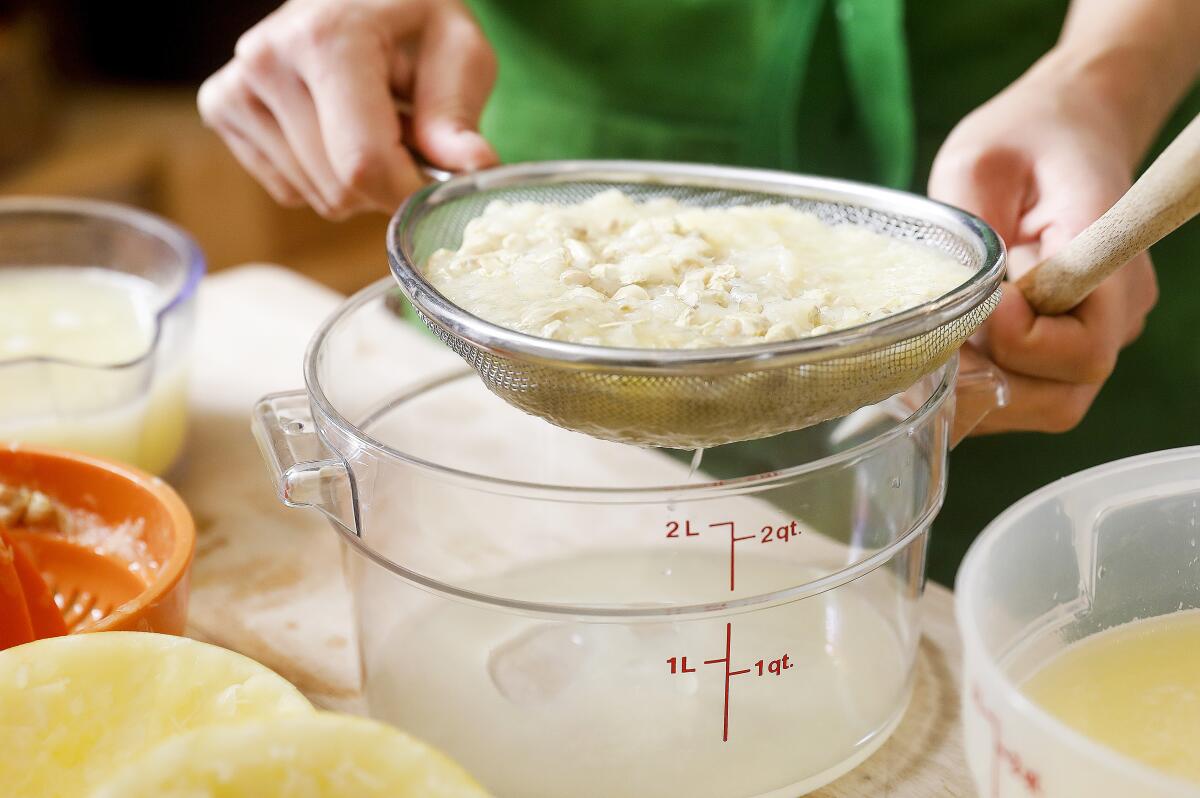What is pectin and why it’s important in making marmalade

- Share via
This story is a component of the feature “Seasons of Preserves: Citrus Marmalade,” which is part of a four-part series on preserving fruit at home called “L.A. in a Jar.”
If you know even the slightest thing about jam and jelly, you’ve probably heard the word pectin before. When making jam or fruit butter, worrying about pectin is not really necessary since those preserves contain actual fruit matter, which provides body to the preserve. But when it comes to making marmalade or jelly, it’s important to know about pectin because it’s what gives those two preserves their texture and helps set them once cooled.
Pectin is found naturally in many fruits, chiefly tart varieties of apples, oranges and berries like blueberries. When the fruit is heated, the pectin is activated and leached into whatever liquid the fruit is cooking in, be it the fruit’s own juices or water. In the instance of marmalade, we’re dealing with pectin from oranges, which is most prevalent in their rind, or peel. Once the citrus peel is boiled, the pectin is leached into the cooking liquid. This cooking liquid now contains all the pectin you need to set your marmalade and acts as a conduit to dissolve the sugar you need to add to sweeten it properly. Without pectin, you’d just have orange-flavored syrup.
More to Read
Eat your way across L.A.
Get our weekly Tasting Notes newsletter for reviews, news and more.
You may occasionally receive promotional content from the Los Angeles Times.











